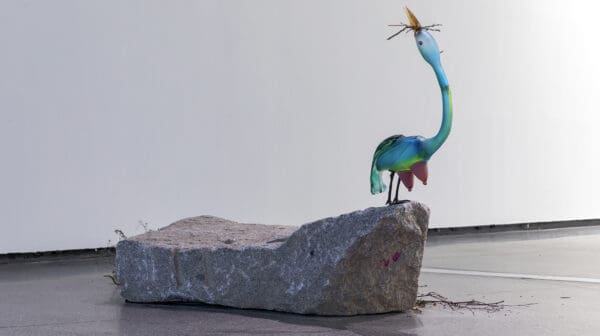
Laure Prouvost meets the real with the ludicrous
French-born/Belgium-based Laure Prouvost animates her first major Australian survey with her hallmark absurdism. ‘Oui Move In You’ is showing now at the Australian Centre for Contemporary Art.
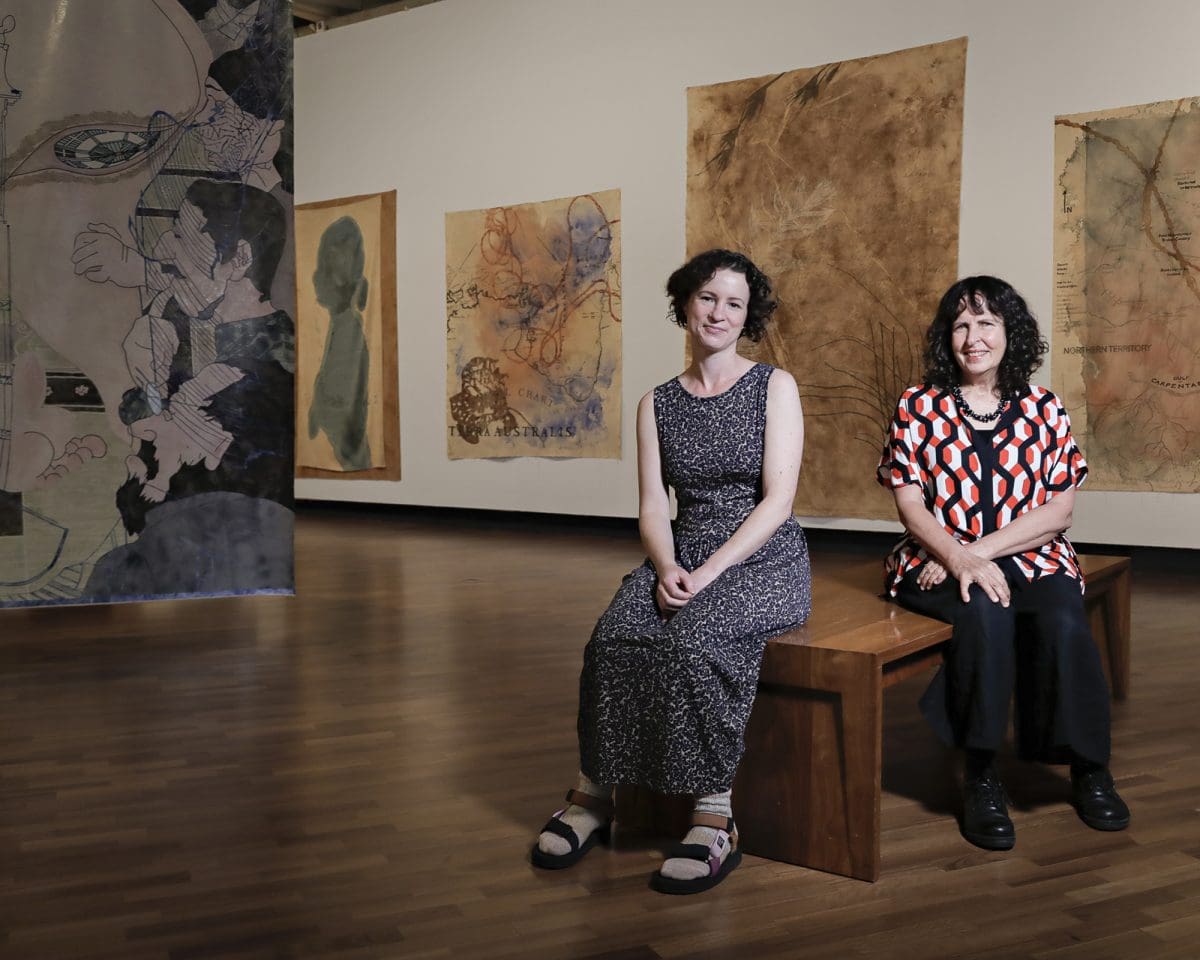

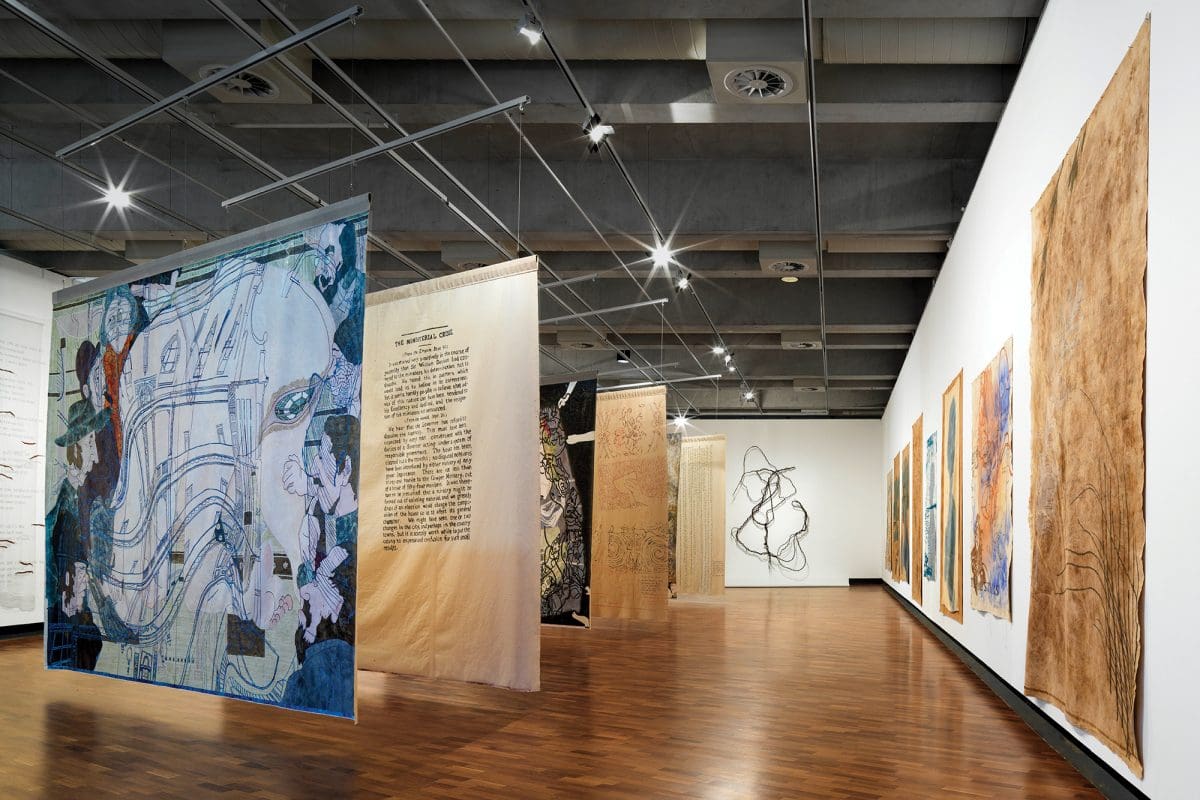

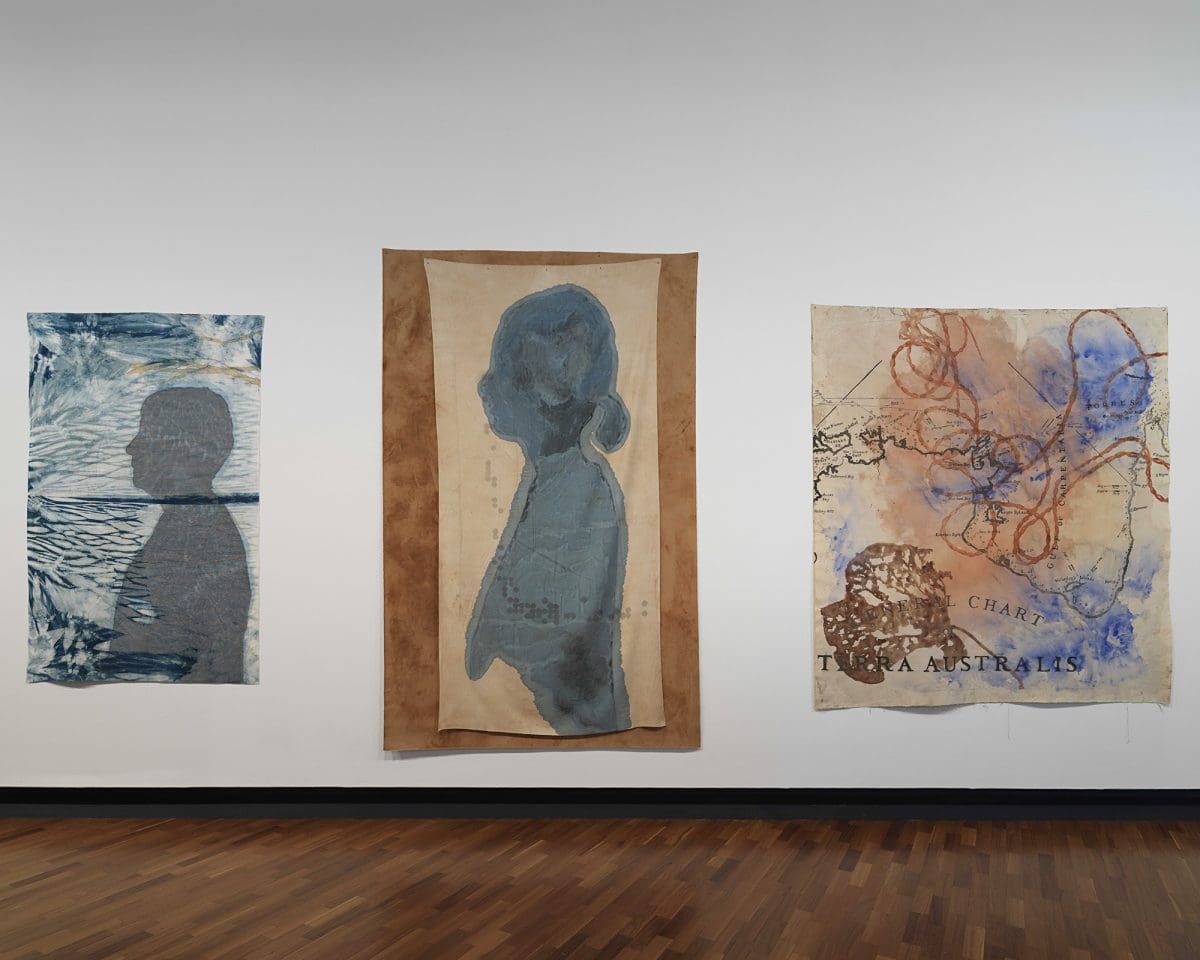
Judy Watson and Helen Johnson are an ideal combination. Two of this country’s leading artists—a Waanyi woman and a woman of Anglo-descent respectively—their art centres on women, colonialism, and revealing history, albeit in differing ways. Earlier this year, they came together for the National Gallery of Australia (NGA) exhibition, the red thread of history, loose ends. An expanded iteration is now showing at Museum of Art and Culture Lake Macquarie. The artists talk generously about working together, motherhood and colonialism.
Tiarney Miekus: Considering the areas of overlap but also great differences in your works, what made you feel your art would work well in dialogue together?
Helen Johnson: When I was in very early conversation about doing a show with the NGA, I initiated asking Judy to show alongside. There are a number of reasons for that. Firstly, she’s someone whose practice I’ve admired for many years. And I also was really intrigued to bring together my work and Judy’s because materially there are similarities of working on unstretched surfaces, often working at quite large scale, and building up layers in the work. But the outcomes and the trajectories of our works are really different.
Also, the first time I really connected with Judy was when we crossed paths at a dinner in Sydney and I was six months pregnant. I remember having this beautiful conversation about motherhood and the ways it changes your sense of self and your body, and processing that relationship. I think that’s really come to the fore in this show. It started out dealing with colonialism, from our very different subject positions, and thinking about the roles and perspectives of women in relation to colonial processes and continuities. But it’s become about a transmission that happens on a familial and broader social level. There are points at which our works unite and then points at which they’re incommensurable.
TM: Judy?
Judy Watson: Having seen Helen’s work and then thinking about one of the works she had at the Queensland Art Gallery, which was in relation to Vida Lahey’s Monday Morning [1912] depicting the weekly washing day— and back in 1981, I’d made the works monday is washing day and a suburban wash, and made them in relation to women. I was a student living in Tasmania and reading a lot of feminist books, and also having to save up to go down there, working in factories or whatever. So, I was thinking about the labour of women in contemporary times. And thinking back to my grandmother, particularly my Aboriginal grandmother—my matrilineal Aboriginal heritage side—whose first job was ironing when she was five or six years old and then doing washing and domestic work on stations.
I was thinking how this transmits. I was reading a lot of Simone de Beauvoir and had studied women’s literature—whether it’s labour divisions or how women are seen in history. I recognised that state of consciousness and the layering within Helen’s work and the way that she was referencing history and imagery, and making work which is like partial depth, enabling curiosity of the viewer to peel back the canvas and see what’s lying underneath. That’s what I’m always interested in: concealed histories.
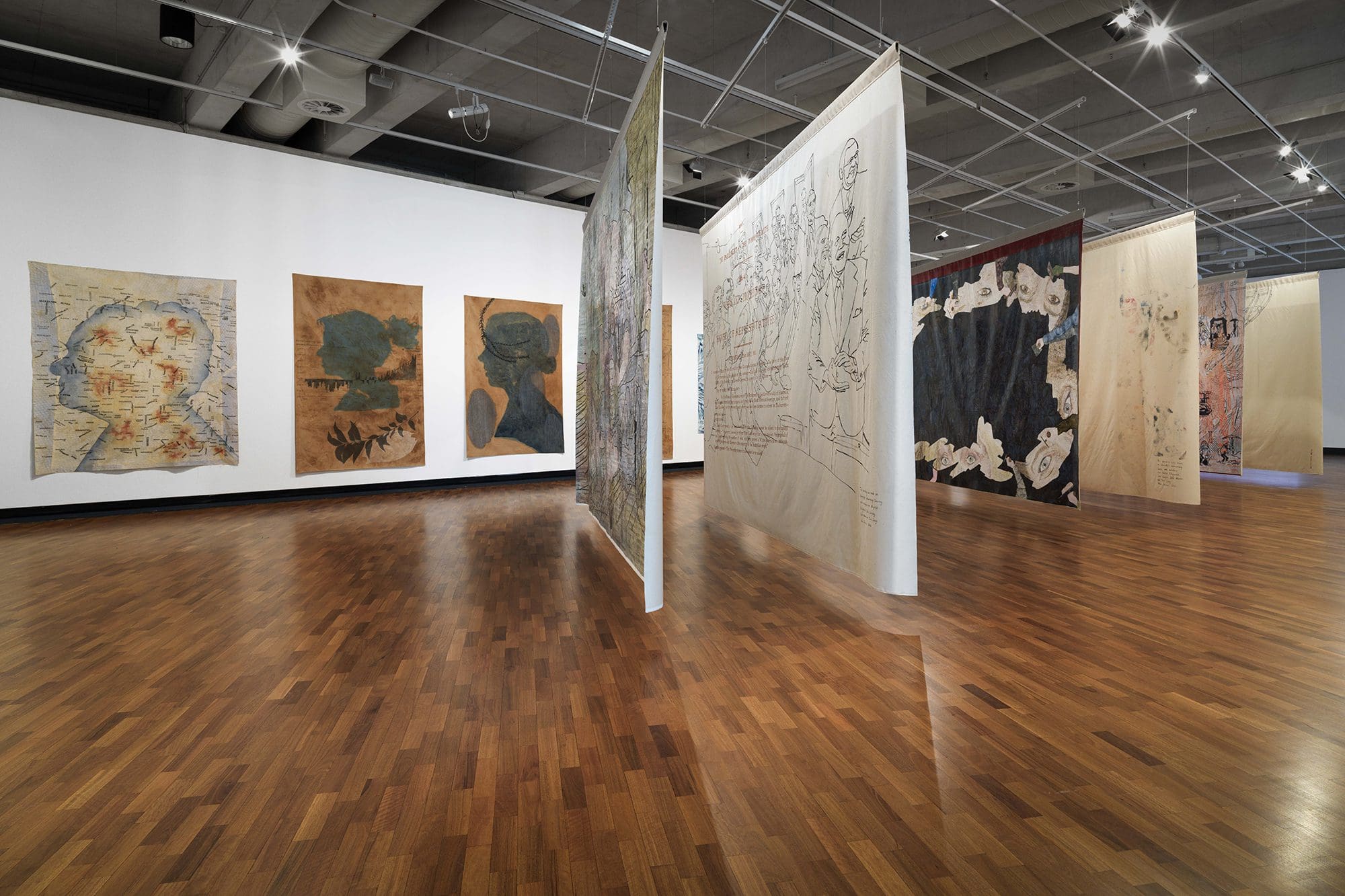
TM: How much were you in conversation throughout the making process? I understand it was a year-long period?
HJ: It started with conversation, but because we were working on this project during Covid [lockdowns] it was pretty restrictive. If we happened to be in the same city—our studios are in different places— we would connect and spend time together in person when we could, but we didn’t go to each other’s studios.
JW: We did send photos back and forth.
HJ: There was a lot of image swapping and zoom studio visits.
JW: And we did go and see some shows together as well. That was interesting to walk and talk and see things together. I think that’s always a good approach with other artists or colleagues or friends, just to share how you’re responding to something, and to challenge and talk about things because a lot comes out of that.
HJ: I really agree. Exploring visual languages I find—and this also comes from doing art therapy work—that people become legible in a different way through those processes.
TM: The first time that you saw your works together was the final install at NGA. What was your immediate, instinctual reaction?
JW: I thought they looked really good. It’s like a forest of works that you negotiate and walk through, seeking glimpses of my work through Helen’s or vice versa. But it was a tricky space to show in. What about you, Helen?
HJ: I was ambivalent to be honest. There were certain things I really liked, like seeing the works in relation and the connections and differences that emerged. I think because I did that install over zoom, which is something I’ve never done before, coming into the space physically I was like, “Oh, I have made these really monolithic works that are like slabs through the middle of the space.” Depending where you come to the space from, in that iteration of the show, they were really in your face. That relation is going to shift at MUMA. Those connections through motherhood and family, a lot of that is being drawn out in the MUMA iteration by bringing in earlier works of ours, and complexifying the readings of those connections.
TM: The way that you both portray women—I know for you Judy there is your matrilineal history, and Helen I believe for this show you researched historical imagery of women as symbols of new Federation. Can you talk through how women appear in your works? JW With the maps that I was looking at, a lot of my family, both women and men, had worked on stations. The map was like the bones of where people had worked, often indentured. Not necessarily being paid and certainly not having the freedom to move in those places. The maps are both centering certain people’s employment and lives, but also containing them.
It was interesting looking at these places, there were a lot of station names and things that I’d heard about through my family when they get together. They sort of talk about the past—certainly when my grandmother was alive and other family members—and the stories of these people working on the stations and their memories from those times. I haven’t been to some of those places, but I feel like I know them within my body memory, like a blood memory of them. And then placing the images of some of my family, the women in my family, as shadows across those works. I wouldn’t say the works came together easily. It was wringing them out.
HJ: I feel like there’s a stratification in the way I deal with that question in my work, particularly in relation to colonialism. My parents came out here in the mid 70s from the UK, and even though both in the UK and here they were immersed in colonial realities and beneficiaries of them, those realities were not legible to them on a conscious level and were not legible to me as a child either. But it’s something that in my adult life, I feel like you can’t live as a member of a colonial society without doing the work of understanding that as an ongoing thing.
JW: But some people never question it. It’s interesting as to what made you start to question?
HJ: When I think about that, I think of my sister making me a mix tape when I was 12 that had Archie Roach and Tiddas . And listening to their lyrics and stories was having a realisation of, “Oh, they’re talking about here.”
But in my practice, for a long time I’ve had this process of moving between these broader social constructs and ways in which identity—like colonial attempts at constructing identity—how those things are maintained. And I think that’s really present in the painting with the Federation women, how these images of young white women were used to characterise the newly federated Australia as this “Oh, where do I go now?” Like feigning weakness, but also embedded is this idea of women being weak and unknowing, which is not true to reality.
Then, on another level, I circle back to making works that are subjective and personal. Particularly in recent years, thinking about becoming a mother and the transmission from mother to daughter and what that means, and how that changes the relationship I have to my own mother and so on. And I think those two things, not really on a conscious level, have ended up being quite separate elements of my practice. And the show that we are doing at MUMA brings it all into one space.
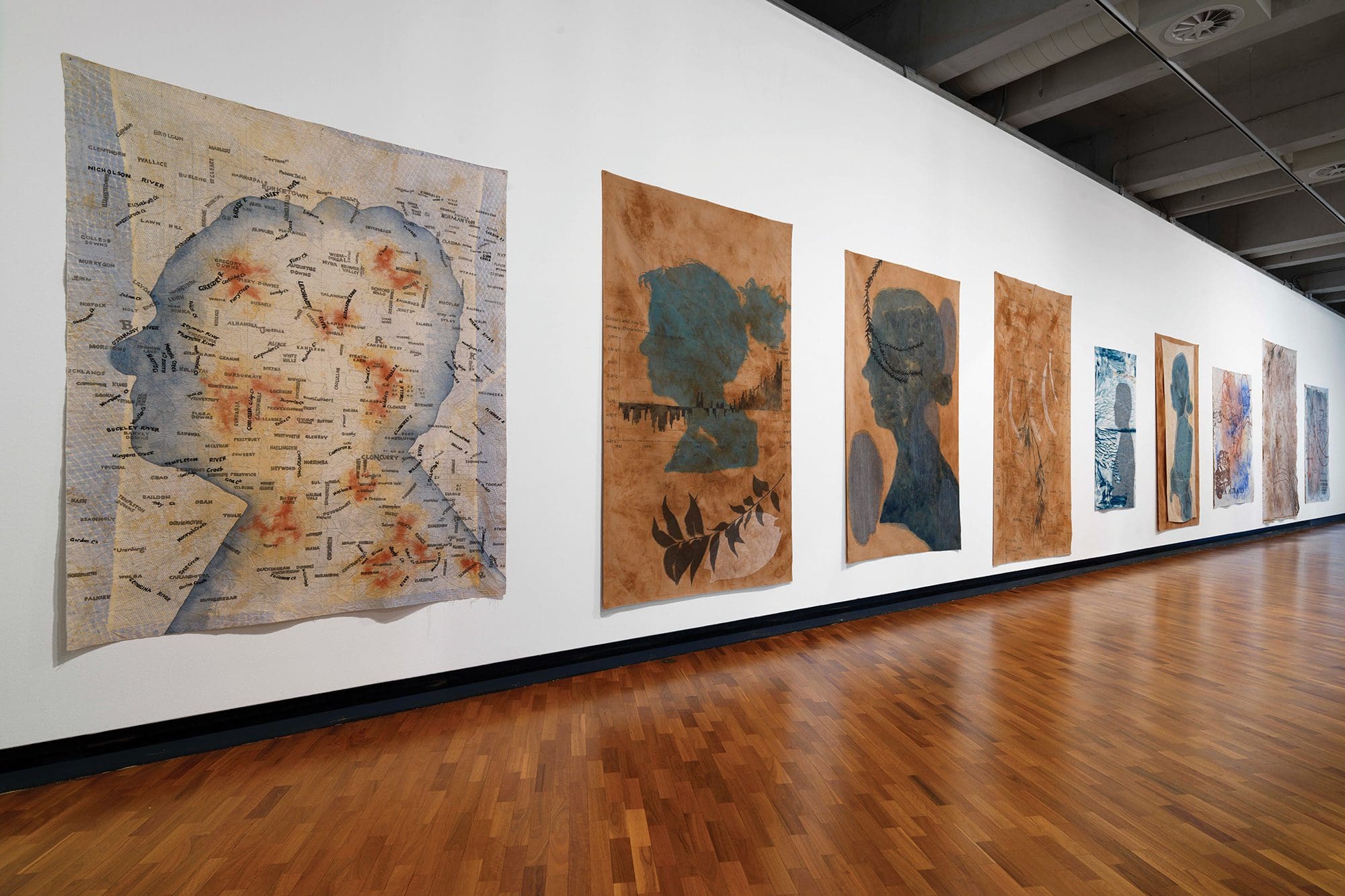
TM: On that subject of motherhood—is there a juggling act between a domestic life and an artistic one?
JW: Always, but I think whether you’re a mother, father or carer, the juggle is always between family and sustaining the people around you, caring for them, and your artistic practice or your job. There’s always what you have to do and what you want to do. It would be nice to just be in the studio, making work and having time to really think. But there are so many demands on your time, bills to be paid and various things. It’s like a web that you’ve got to hang different things on and just work out: what can you do and what do you want to do? But to me family is always most important.
HJ: Yeah, I’m having a ‘bring your child to work day’ today. This year my life is divided into work in the studio, my family, and then training as an art therapist on a psychiatric ward two days a week. And it’s interesting— doing groups in the psych ward has become like a bridge between the two, because it’s the site where creativity and care are fused. And working in that way where it’s like, we’re all going to sit around the table and make together. I started doing this in my studio with my assistants, starting the day with mini-art therapy sessions, just self-regulating and sensory. They’ve all been through art school and they were like, “Oh, wow, I’ve never made like this.”
TM: For how politically and culturally motivated both of your works are, often my immediate, intuitive reaction is to find your works very beautiful and beguiling. Is it a balancing act creating an image with political resonance but that’s aesthetically strong in its own right?
JW: Always [laughs].
HJ: The aesthetic aspect is the invitation to engage. I wrote a quite dry PhD thesis about this, but that experience is happening on a metacognitive level. It’s not happening on the level of language and it’s like it’s opening you to something, to have that critical engagement. It’s complex, because on one level what does it mean to aestheticise an ugly piece of history? But on another level, what does it mean to leave those ugly histories tucked away in the archives? When I’m dealing with that, I’m also very conscious of what is and isn’t appropriate for me to reference in my work as a white woman.
In making these works I was reading records of the first sitting of parliament, and these documents are startling and disturbing. Why aren’t we taught these? They’re the fundamental foundations of this colonial society that we’re a part of. That becomes a driver for me to bring images of these women or men and their racist principles up to large-scale, back into colour, and put them in an institution. My hope is that it starts a conversation for people.
JW: And you see that echoed across cultures all over the world that have a colonial history. But in terms of your question of dealing with this content, I think about the films that I’ve seen, or the books that I’ve read that have been powerful to me. Whether it’s seduction or something about them, they pull me in. And that’s what I want to do with my works.
TM: Something interesting that has been brought to the fore from your exhibition is the role of non-Indigenous artists making art that comments on colonialism. What are each of your thoughts?
JW: Well, as I said to Helen, it’s a shared history and we’re all in it together. I think you have to acknowledge that wherever we are in Australia, what’s called Australia now, there are levels of Indigenous histories, and then other overlaid histories. That’s just part of it. You can’t get away from it.
HJ: When I make work that talks about colonial questions and identities, it’s like you are assuming responsibility for a shared history, for referencing a shared history. You are guaranteed to provoke responses in that regard. To me it’s interesting. Over the years, the people who have critiqued me [for making art that references colonialism] have all been non-Indigenous, the ones I’m aware of. And when I’m navigating that space, I look to Indigenous attitudes, and I try and inform myself with different Indigenous people’s points of view. One common thing I hear is: “Oh, that’s an Indigenous issue.” And it’s like, why should Indigenous people have to do the work of processing colonial constructs for us when we’re the ones who created them and perpetuate them and benefit from them?
JW: It’s a heavy burden.
HJ: The sense I get is that a lot of Indigenous people find that exhausting. And in my work, I’m really quite pointed about what I will and will not address. I don’t tell Indigenous stories. That’s not my place, that would be inappropriate. But in turn, I don’t expect Indigenous people to be doing all the work of trying to get more non-Indigenous people to see their own role, particularly white people, to understand their position in the whole thing.
JW: I think it’s important that there are advocates for Indigenous people where they don’t have to do all the work. They don’t have to be asked all the time, “What do you think about this? What do you think about that?” Well, why don’t you do some homework and advocacy. And if you hear something that doesn’t sound right, question it and say something. Try and change the trajectory of where the misinformation came from.
the red thread of history, loose ends
Judy Watson and Helen Johnson
Museum of Art and Culture Lake Macquarie
27 May – 23 July 2023
This article was originally published in the September/October 2022 print edition of Art Guide Australia.